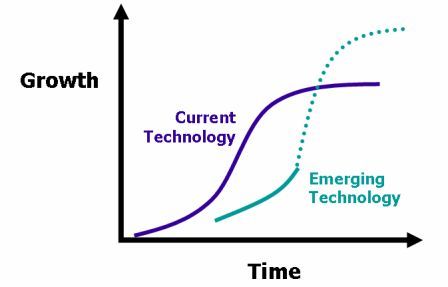The other day I came across this excellent video interview on the Harvard Business Review blog with Clayton Christensen discussing “disruptive innovation.” As some of you may know, Christensen wrote The Innovator’s Dilemma. This is one of the most important investment books for everyone to read. It is essential for understanding the paradigm of innovation and disruption in business. If there’s ANY tech CEO (or even non-tech CEO) who has not read this book I would have to seriously question their judgment as an executive. This book is that important.
Charlie Munger has told us investors that we need to have “mental models” upon which to build our world view and investment strategy (brief aside: there’s a really cool site called
Think Mental Models which honors this investment credo. I fully subscribe to this belief and as this blog develops, will look to share the models that are core to my investment philosophy).
The Innovator’s Dilemma, along with Porter’s Five Forces, create the lens through which to understanding the competitive landscape of any business, whether new or old. Although the
Innovator’s Dilemma tends to appear more relevant to the technology sector, as that is the home domain for the most high profile innovation in our economy, it is equally relevant to all industrial and service businesses alike.
The Dilemma
The crux of the dilemma is that there are outstanding businesses, highly attuned to their customers’ desires, outstanding at driving their product’s evolution forward, and supremely efficient at operating their businesses profitably, which ultimately succumb to failure. Christensen labeled this a “dilemma” because these dominant market leaders fail precisely because of their managerial strengths. This is so, because the smaller, innovative upstart competitors are willing to accept lower margins and lower product quality initially in order to break into niche segments beneath that of the dominant leader within the marketplace.
By operating in this way, the young upstart is able to profitably grow a business while refining and developing the product until it eventually is a cheaper, better and eventually a replacement for what the dominant market leader has to offer. Meanwhile, the market leader, in an effort to protect their market position and profit margins, and to cater to the needs of their largest customers, never enters into the new level to their core market because they refuse to take part in driving prices, margins and profits lower in the short-run. Christensen narrates this phenomenon and develops the theory primarily through an analysis of the disk drive market, where these innovations tend to transpire at a far quicker pace than other arenas.
Mark Suster, a “2x entrepreneur turned venture capitalist” wrote several outstanding posts on the Innovator’s Dilemma and how it not only impacts, but is a core element of his own personal investment strategy. I highly recommend reading both The Amazing Power of Deflationary Economics for Startups and Understanding how the Innovator’s Dilemma Affects You. One point that I would add to Suster’s analysis is while the new firm accepts lower margins, they do so for particular products, not on a firm-wide scale. These disruptive technologies are able to sell each unit of their product for a lower margin; however, their technology affords them the advantage to spread the fixed cost element in a much more beneficial way such that the firm-wide margins are far greater than the incumbent technology. Typically the firm-wide advantage comes via the capacity to support enormous scale on a smaller operating structure. This is particularly true in the Internet age. And in this fact lies the ability to compete on price on a per unit basis.
Steve Blank is a pioneer in entrepreneurial theory, professor at Stanford and author of Four Steps to the Epiphany. His impact is visible throughout the many innovative powerhouses born in Stanford. He wrote an excellent post that relates the Innovator’s Dilemma to how large enterprises can cope and prosper in such an environment called The Search for the Fountain of Youth: Innovation and Entrepreneurship in the Enterprise. This too is a must read.
Investment Implications and the Mental Model
Because these issues are so fundamentally important to companies both new and old, the connection to any investment strategy is important. The s-curve model is the visual translation of the impact of the Dilemma. (H/T to
Your Brand is Showing for the graph)

As it pertains to market disruption, we look at the S-curve of the current technology relative to that of the emerging technology. With every market leading technology, the product initially started off on a relatively slow growth trajectory. Once it achieved a critical mass of adoption, the growth takes a parabolic trajectory; however, after adoption is ubiquitous, the growth plateaus. Meanwhile, the young, emerging technology starts on a path beneath the current technology and crosses above the current in terms of both growth and efficiency (not necessarily quality just yet) at some point on its own parabolic phase of growth.
These points are crucial for every investor, whether one focuses on growth or value. For growth, the importance is obvious (invest in companies on the parabolic part of their growth trajectory), yet for value it's less so. Understanding the Innovator's Dilemma is instrumental in determining whether some companies with solid track-records are experiencing a temporary blip, thus creating the value opportunity, or whether they are in fact being disrupted from beneath. I look forward to sharing some anecdotal examples over time.
